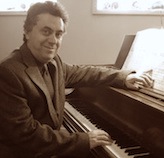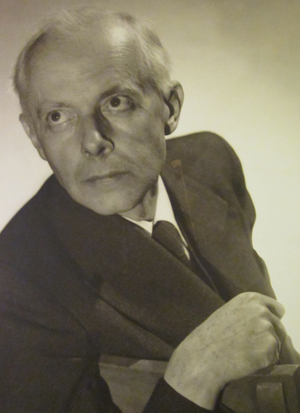by Mike Telin

Laki began writing program notes for The Cleveland Orchestra in 1990. He has taught at Case Western Reserve University and has also held appointments at Oberlin, John Carroll and Kent. A native Hungarian, he received his diploma in musicology from the Franz Liszt Academy in Budapest, and is an authority on Hungarian music.
In addition to giving the 6:30 pm pre-concert lectures before each Takács Quartet performance, Laki will lecture about “Bartók and the Hungarian Musical Tradition” at the Hungarian Heritage Museum on Saturday, March 15 at 2 pm.
Mike Telin: You must be one of the world’s foremost authorities on Béla Bartók.
Peter Laki: I don’t know about that, but I am from Hungary and I did go to school at the Franz Liszt Academy where every day I walked past the classroom with the plaque that said “This is where Bela Bartók taught piano.” So I’m kind of steeped in that tradition and I knew several of Bartók’s students. It was a living tradition that I grew up in. Of course as a musicologist I have studied his works for many years and have published articles and given lectures about them.
MT: I’m interested in hearing your view of how Bartók used folk music in his string quartets.
PL: I would say that his use of folk music is a little bit indirect. You don’t hear a lot of original folk melodies. Sometimes he writes what sound like folk melodies but they really are his own invention.
He was a scholar of folk music who did original field recordings. He analyzed the recordings and wrote articles and books about them. He had an analytical mind and identified melodic and rhythmic features in these melodies – then he isolated them and put them in a new context in his quartets. That put them through a filter, so it is not the original folk music that he found. It has been manipulated and transformed and combined with non-folk elements.
MT: Were these popular melodies that most Hungarians might recognize, even after he transformed them?
PL: Something that not everybody realizes is that in this case folk music doesn’t mean something that is popular or that is well known. This folk music was unknown and it had to be searched for and discovered and made known to the rest of the country because it was only practiced in remote rural areas.
He had to go to considerable trouble – traveling through the mountains on bad roads – to find this music which people had no idea existed. Then he published it as original Hungarian folk music. It was not something that people recognized or identified with. He had to fight to get it accepted. That’s why the folk music is an important thing because it is not something that could be taken for granted.
The other reason the folk music was so important is because it was not western. Bartók was a musician who was steeped in the western tradition. He was an artistic great-grandchild of Beethoven. His teacher studied with Liszt, who studied with Czerny who studied with Beethoven, so there is a direct line from Beethoven to Bartók. He was very much part of the western compositional world.
MT: So he was looking for a new voice through this transformation of non-western folk music?
PL: He needed something to step out of that – some outside elements to revitalize his music, to get him out of simply following the German romantic tradition. He needed to do something entirely new. He was also looking for something that was recognizably Hungarian. Something that could give Hungary a musical voice on the international scene, something both local and universal. And this is what folk music allowed him to do.
MT: But wasn’t he interested in more than just the tunes?
PL: Bartók was a modernist composer. He wasn’t just looking for pretty melodies to put into a piece. He was looking for new ways to structure his music. Folk music gave him a lot of ideas about harmony and rhythm and how to make it different from the western Germanic tradition. Folk music gave him the means to do that.
MT: Folk music had an important influence on other composers as well.
PL: German composers also were inspired by folk dance and such, but in a completely different way. They didn’t make a scholarly study of it. Brahms wrote some Hungarian Dances, but he would go to the plaza gardens in Vienna and listen to the gypsy musicians play — and that was the extent of his field work. What he did was very lovely. It’s great and nobody disparages it. But it is a different kettle of fish.
For many composers, folk music was like a found object — interesting things they picked up along the way and they did interesting things with it. But Bartók did the analytical work and isolated it into its elements. You just need two or three musical elements to work with, and the quartets are filled with those.
Bartók photograph by Geoffrey Landesman courtesy Cleveland Orchestra Archives.
Published on ClevelandClassical.com March 13, 2014
Click here for a printable version of this article.




